The ceiling is an important part of any room, since it protects you from the elements, while also finalizing the overall look of that room as well.
There are many types of ceiling cracks, however, so if you see any cracks in the ceiling, it makes sense to identify what type are they and also how demanding or challenging they are to deal with.
This will give you a good idea of what you can expect and if you will encounter any kind of issues or not.
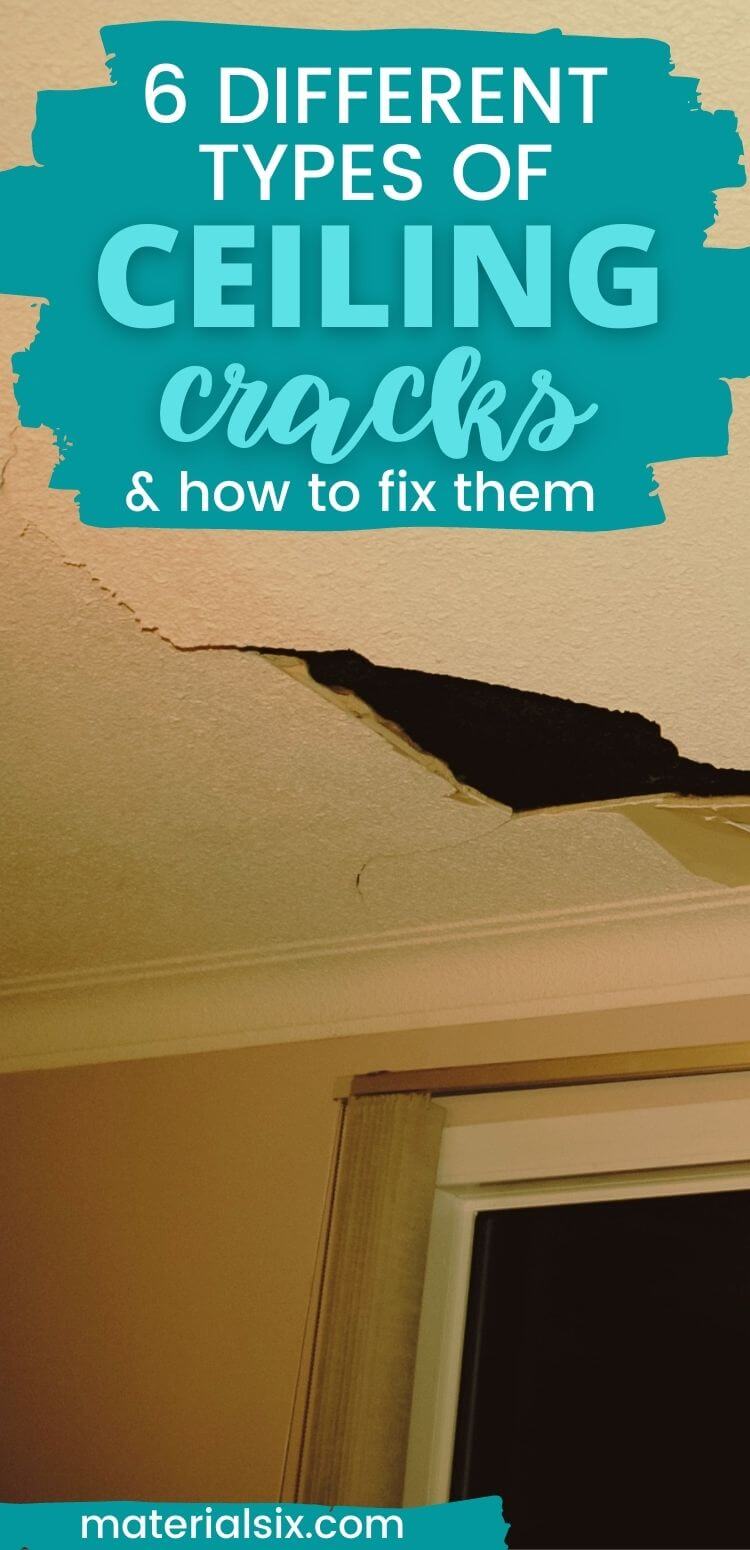
What types of ceiling cracks are there and how can you deal with them?
1. Deep, large cracks found in a bowed ceiling
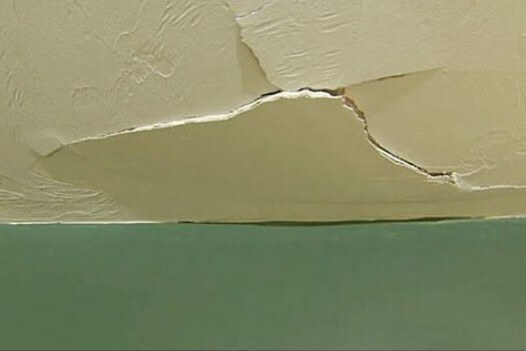
Whenever you see very deep, rather large cracks right in the middle of the ceiling and there’s also a bow, that shows signs of structural damage. There are a variety of different things that can lead to such a problem. It can be anything from having too much weight on the ceiling to excessive settling or even a lot of water damage, depending on the situation.
Additionally, if your home is older, these cracks appear due to foundation damage. In some cases, removing the load-bearing wall and not offering any other support can bring ceiling collapse issues, so it’s a very important thing to keep in mind.
The way you repair it is quite complex. You do need to remove everything on the floor, both below and above the crack, as this is when the ceiling will collapse. Ideally, you want to work with an expert, as fixing cracks in ceiling plaster that are very complex does take a lot of time and effort. But it’s certainly going to be worth it, which is something to focus on.
Watch this helpful video:
2. Cracks you can find between your ceiling and wall
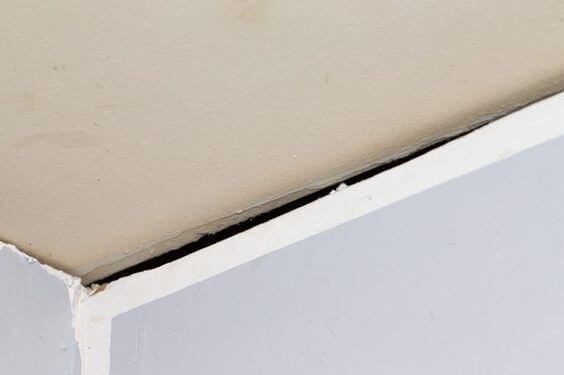
Normally when this type of crack appears, the main reason behind it is that there’s a truss uplift. The roof trusses are created to move and shift since the wood is contracting and expanding due to heat and humidity. Obviously, trust can lift the ceiling and shift, especially if you are dealing with a storm or windstorm as well.
You can also encounter this type of issue when the drywall is not attached to the ceiling and the wall itself has to deal with a larger load. When that happens, these dangerous ceiling cracks can appear randomly, and they must be fixed as quickly as possible.
How do you repair this type of crack? The good thing is that these cracks don’t come from bad structural integrity, so you can use either crown molding or just cover with some paint. Crown molding is a good idea, although in this case, you want to hire a professional.
The painting process is something you can DIY, and it might actually convey a great result in the long run. It’s definitely not the simplest thing to do, but the results can be very good in the long run.
3. Spiderweb Cracks
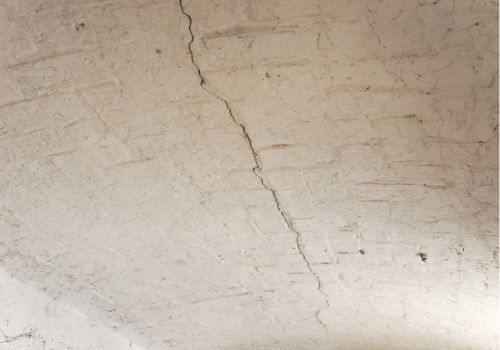
Spiderweb cracks are some of the most common types of ceiling cracks. They are quite common, and they appear from foundational settling issues. This might be a sign that the structural integrity is compromised, but only if the cracks are very large. If they are not large and thinner than 1/16 inches, then you don’t have to worry about it.
There are also times when there’s too thick of drywall, and these cracks similar to a spider’s web will appear when the drywall is drying up. They can be repaired with ease for the most part, but it can take a bit to handle all of them if you have multiple cracks in the ceiling plaster or wall.
Usually, the way you repair this is you sand some of the current compounds to ensure everything is ok. Once that is done, you can add a new, fresh coat and you will be good to go. It’s a very good option and it will convey some impressive results if you manage it appropriately.
Check out a drywall repair for small, quick fixes, available on Amazon.
4. Yellow or Brown Cracks
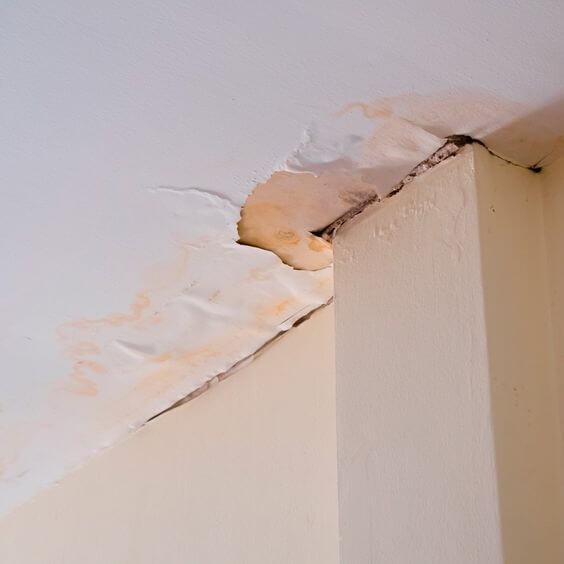
Some of us ignore these, even if they can be dangerous ceiling cracks. Most of the time, brown or yellow cracks are signaling that you are dealing with a water leak. You do want to study everything and ensure that you know where the leak is coming from. Repair that, and then you can repair the drywall. Otherwise, if you just replace the drywall, you will continue having the same issue over and over.
Only after you deal with the water issue you can repair the ceiling. Dry the ceiling and if the ceiling is severely damaged, you can remove some of the affected sections. The way you do that is with your knife, you can use it to cut the place where moldings are meeting the drywall. Then you can use a sledgehammer to make a few holes in the drywall. That’s when you use the crowbar to remove the rest of the drywall. Using protective equipment is very important here.
In order to put up the ceiling drywall, you want to mark the current fixtures and create an outline. Sand the drywall edges, and then use drywall adhesive to stick it to the joists, and rely on t-braces in order to retain it in a single place.
Related Post: How to Repair a Large Hole in the Drywall
5. Straight Cracks
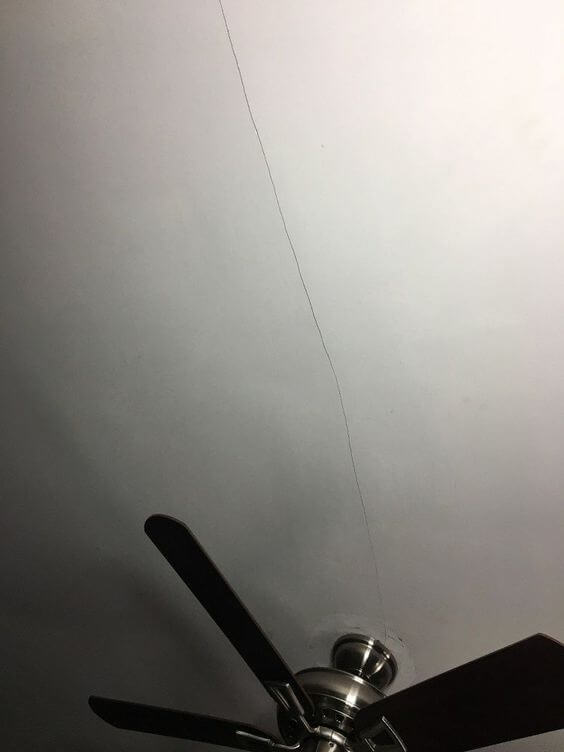
Straight cracks are also very common, but thankfully not all of them are dangerous. These cracks in the ceiling appear due to an improper installation or taping job.
In case you don’t have enough mud applied, the tape doesn’t stick to the joints. What happens is that it pulls away, so you will have a plaster crack. That, combined with the extra humidity can bring in straight cracks.
The important thing to keep in mind here is that such cracks are superficial, so you may want to apply some of the drywall compounds to the tape, the stick it right to the joints. In some cases, replacing the tape might actually be the right approach, and it might help more than you expect. You can do that by using a razor knife.
Then you just have to add a new tape and then spread some drywall compound with the putty knife. Once you do so, you will be ready to go.
6. Hairline Ceiling Cracks
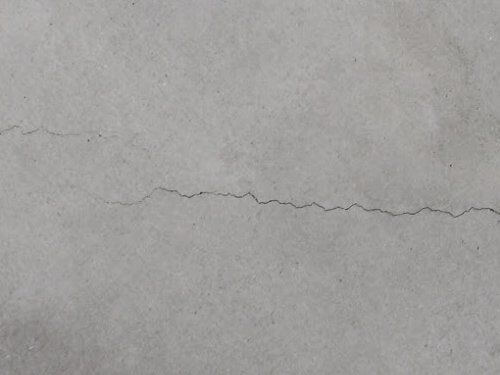
Having hairline cracks in the ceiling is not exactly a pleasant sight. These appear due to plaster issues when you added it over your drywall. Due to humidity or temperature changes, the plaster will contract or swell. It will generate some small cracks.
One thing to keep in mind is that these are not that serious, so it’s one of the repairs that can be quite easy to do if you avoid any rush.
When it comes to repairing hairline cracks in the ceiling, the thing to keep in mind here is that some paint touch up will be enough. A lot of people ignore them because they aren’t really a cause for concern. Some people are still worried about them, but more often than not these can be ignored.
How to tell if ceiling cracks are serious?
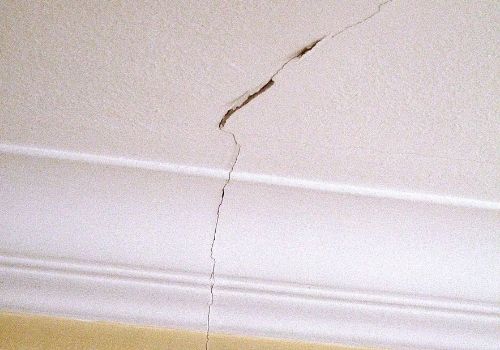
One thing to keep in mind when you ask yourself “ceiling cracks when to worry” is to understand that not all ceiling cracks are the same. While some of them are dangerous, others are not exactly that problematic.
Small cracks tend to be superficial and you don’t have to worry about them that much in the first place. Larger cracks in the ceiling can be a cause of concern. When you see something like this, the best thing you can do is to work closely with a professional. He will be able to offer you the assistance and support you need, and in the end, results can be great since you can solve any issue.
Generally, ceiling cracks are an issue to be concerned about since they show that something is wrong. Granted, there might not be a severe issue all the time, but managing that appropriately is extremely important and a thing you want to consider as much as possible. With that being said, you always want to have a professional inspect any ceiling cracks right away.
Working with an expert is ideal because it can narrow down what caused the problem, and it will be easier to solve the problem. There will always be challenges that can arise, so the most important thing is to understand the issue and deal with it fast. The faster you do that, the better since you can maintain adequate ceiling integrity.
Conclusion
We recommend contacting a professional if you’re dealing with any kind of ceiling cracks. There are always demanding situations and challenges that can appear. But the truth is that if you manage everything accordingly, results can be very impressive.
It does take a bit of trial and error to make it work, and in the end, the benefits are extraordinary. It’s a good idea to assess the ceiling cracks and then ensure that you have the right solution. That’s what will make a huge difference.
More Ceiling Posts & Other Posts You Might Like:
- How to Fix a Cracked Ceiling with Radiant Heat
- How to Hang Curtains from The Ceiling Without Drilling
- How to Hang A Tapestry on the Ceiling in 7 Easy Steps
- How To Repair Water Damaged Cabinet Doors (9 Easy Steps)
- How to Hang Pot Rack in Plaster Ceiling
- Can You Put An Outlet In A Ceiling Box? Read This First!

